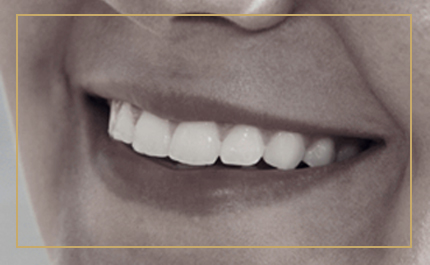Wheatland Family Dental Services
Wheatland Family Dental offers a full range of services from Preventive Care, Restorative Dentistry to Cosmetic Dentistry. Whether you are looking for a cleaning, fillings or teeth whitening our doctors and staff are uniquely qualified and highly experienced for all of your dental needs. Our goal at Wheatland Family Dental is to help you reach and maintain maximum oral health.

Visit the American Dental Association website for extensive in-depth information on various procedures and dental terminology.

Preventive Care
Professional Cleanings
Professional cleanings performed by a certified dentist or hygienist are just as important to your dental health as daily brushing and flossing. Using specialized tools and training, your hygienist or dentist will:
- Remove plaque build-up from the surfaces of teeth. (Bacteria in the mouth form plaque, which collects on teeth and causes decay, gum disease, and gingivitis.)
- Remove tartar from teeth surfaces. (Tartar, or calculus, is plaque that has become so hardened on the teeth that its removal requires special procedures. Tartar below the gum line is also an indicator of gum disease.)
- Remove surface stains from teeth through polishing.

Examinations
Regular examinations help detect and prevent health issues before they become serious. Consistent dental check-ups help catch problems when they are small and easier to treat. Left unattended, small treatable problems become worse and may require more extensive, expensive procedures to repair. Dental examinations generally include the following:
- Gum Disease screening
- Oral Cancer screening
- Visual tooth decay evaluation
- Visual gum disease examination
- Gum pocket measurement and tracking
- X-ray examination to detect: tooth decay, cysts, tumors, problems below the gums and other hidden issues
Dental X-rays (Radiographs)
X-rays are a primary tool for early identification of dental problems. Detecting issues with X-rays before they become problems can save you money in the long run by preventing the need for more extensive, expensive procedures or surgeries. X-rays are primarily used to detect:
- Internal tooth decay
- Cysts (fluid filled sacks at the base of your teeth)
- Tumors, both cancerous and non-cancerous
- Impacted teeth
- Teeth that are still coming in
Sealants
Sealants are generally used to help prevent tooth decay on the biting surfaces of back teeth (molars). The natural grooves of these teeth can trap food that can resist casual brushing and rinsing. If left in place, the trapped food allows bacteria to multiply, eventually causing tooth decay and requiring costly attention.
Sealants are painted directly onto the tooth where they seal the natural grooves to help prevent tooth decay. While sealants are durable, they are not permanent. They can last up to 5 years of normal wear before needing replacement.
Sealants offer a cost-effective, preventative step to reduce the chances of tooth decay on the chewing surfaces of molars. However, they do not replace the need for regular brushing and flossing.
Gum Disease (Periodontal Disease)
Gum disease accounts for approximately 70% of all tooth loss in adults. Early signs of gum disease include bleeding gums when flossing or brushing and gums that are red, inflamed, or swollen.
Gum disease and tooth decay are caused by the same bacteria. These bacteria form plaque beneath the gum-line, which eats away at the bond between tooth and gum. If deterioration is allowed to continue, “pockets” form in between the teeth and the gums. Pockets deeper than 3ml may require special treatment to remove the bacteria and plaque. Without treatment and continuous maintenance, gum disease will eventually weaken the bonds that hold the teeth in place.
There is no permanent treatment for gum disease. However, it can be kept under control with proper personal hygiene and regular visits to a trained dentist or hygienist.
Restorative Dentistry
From repairing areas of tooth decay to replacing missing teeth, restorative dentistry ensures you maintain a healthy, beautiful smile. Learn more about the restorative services we offer at Wheatland Family Dental.


Fillings
Fillings are used to restore tooth damage caused by tooth decay. After removing the decay and cleaning the area the dentist adds filling material. Fillings are made from traditional amalgam (silver colored) or a composite (tooth colored). Composite fillings, in addition to being more esthetically pleasing, bond directly to the tooth surface unlike traditional fillings.
Dental Crowns
Crowns are used to restore severely damaged teeth due to fracture or decay. After the tooth surface is cleaned and prepared the crown is placed to cover the remainder of the tooth. The crown strengthens the tooth structure and helps prevent future decay. Crowns also improve the tooth’s look, shape, and alignment.
Dental Bridge
Bridges are used to replace a missing tooth in both a cosmetic and functional fashion. A bridge structure is one or more artificial teeth anchored in place by natural teeth, crowns, or implants, on each side of the bridge. Using a bridge to fill the gap from missing teeth helps restore proper bite and prevent teeth from shifting to fill the gap (which may lead to additional bite and jaw joint issues). Bridges can be constructed from gold, porcelain and metal, or all ceramic. Ceramic bridge color is made to match your natural tooth color. Material choice will depend on structural requirements, wear, and esthetics.
Dental Implant
Implants may be the best option for replacing a single or multiple missing teeth. An implant is a metal post that is attached directly to the jawbone. After the bone and surrounding tissue has healed an artificial tooth is attached to the implant. Implants provide superior benefits compared to bridge work as they do not depend on neighboring teeth for structural support, although they are more expensive. Implants are the closest dental structure in durability to natural teeth and have greater cosmetic appeal.
Tooth Extractions
A tooth extraction is the procedure done to remove a tooth from its socket in the jawbone that is damaged beyond repair.
Extractions are generally classified as either non-surgical (also known as “simple”) or surgical (involving cutting procedures). A simple procedure can quickly become a surgical procedure if the tooth fractures or refuses to loosen under pressure. We perform these procedures only after making the extraction site(s) profoundly numb.
Complete & Partial Dentures
Dentures are a “replacement” option for missing teeth. Dentures come in 2 varieties: partial dentures and full dentures. The difference between the two lies in how many natural teeth remain.
A complete denture is a removable prosthesis of white plastic teeth in a pink gum-colored plastic base that rests on the remaining gum ridge once all of the teeth in the arch have been removed.
It is important to note that life with an upper denture, a lower denture, and especially both, is a major lifestyle change when compared to natural teeth. Dentures impact the type of food you are able to eat, your self-confidence in social situations, and even your self-esteem.
Reasons For A Full Denture
- All teeth missing in the same arch.
- Restore chewing ability.
- Restore a natural looking smile.
- Economical alternative to other procedures.
An upper full denture will almost always feel better than a lower full denture. In order to dramatically improve the fit of a lower full denture, we frequently suggest using dental implants as a retentive mechanism. Two dental implants placed in the lower jaw can help anchor the denture and significantly improve comfort. Sometimes, the implants can even be placed in the jaw after a denture has been in use for several years.
Root Canal
A root canal becomes needed when tooth decay is so badly neglected it reaches the tooth pulp. Once the pulp is infected it cannot heal on its own. Sometimes tooth trauma such as a fracture can lead to the need for a root canal as well. In addition to being painful, untreated infections can reach the root tip and compromise the entire immune system.
Symptoms of pulp infections may be:
- Sensitivity to hot/cold.
- Sensitivity to sweets.
- Pain, especially when biting.
- Swelling.
- Bad taste in the mouth.
A root canal procedure includes cleaning out the infected pulp, disinfecting the canals and filling the void with a rubber like substance to prevent further infection. Sometimes a crown is recommended to restore the tooth shape, look, and to strengthen the tooth structure.
Cosmetic Dentistry
Cosmetic dentistry will give you healthy, radiant teeth. It is one of the most cost-effective ways to improve confidence and make you want to share your smile.
With state-of-the-art materials, and tested, trusted dental techniques, cosmetic dentistry improves appearance and enhances self-esteem. Composite fillings have replaced traditional silver colored amalgams, while gold has given way to porcelain in the creation of bridges. Other techniques like teeth whitening and veneers can improve the color and/or shape of your natural smile.

Teeth Whitening
Teeth whitening, as the name implies, is a process for making your smile brighter and more attractive. The many methods of teeth whitening vary widely in application time, effectiveness, cost, and probability of tooth sensitivity.
Dental Implants
Implants may be the best option for replacing a single or multiple missing teeth. An implant is a metal post that is attached directly to the jawbone. After the bone and surrounding tissue has healed an artificial tooth is attached to the implant. Implants provide superior benefits compared to bridge work as they do not depend on neighboring teeth for structural support, although they are more expensive. Implants are the closest dental structure in durability to natural teeth and have greater cosmetic appeal.
Bridges
Dental bridges serve to replace one or more missing teeth. First, the dentist prepares the teeth on either side of the missing tooth to receive crowns. Then, a false tooth is attached between the two crowns. Once the crown-false tooth-crown combination is cemented into place, it ‘bridges’ the gap left by the missing tooth. Bridges offer several benefits:
- They look like new teeth
- They are a durable mouth fixture
- They prevent surrounding teeth from shifting to fill the gap
- They restore a more natural bite and chewing ability.
For these reasons, dental bridges are a good investment compared to dentures. If a bridge is not possible, or the adjacent teeth don’t need crowns, dental implants may be the best alternative.
Porcelain Veneers
Dental veneers are custom crafted porcelain laminates fitted by a dentist over the front of an existing tooth. They bond directly to the front of the tooth, dramatically enhancing its shape, color, and appearance.
Crowns
Dentists use Crowns, or ‘caps’, for restoring severely decayed or fractured teeth. First, the dentist removes the damaged portion of the tooth. Then, a unique mold is taken and used to manufacture a crown out of gold or porcelain to fit the healthy tooth remains almost perfectly. The crown is then fixed into place with special cement. Dental crowns help prevent the need for root canals and tooth extraction by reducing the risk of tooth fracture and tooth decay.

We can help you reach & maintain maximum oral health!
We are always accepting new patients. Call today (509) 525-2787 to schedule an appointment.

